Chateau a Motte Saint-Sylvain
When most people think of castles, they think of
stone, but stone was
simply the final evolution of castle construction. Motte and
bailey castles made of earth and wood were common throughout much of
the Middle Ages, and there are differing theories on their origins.
Some historians believe that they are derived from the grods of
central and eastern Europe. Others believe that they
were developed in
Normandy or Anjou then spread throughout much of Europe. In the
town of Saint-Sylvain in Anjou, there is now a reconstructed motte and
bailey castle representing the 11th and 12 centuries - based on a
historic castle nearby. The castle contained the home of a duke
and three knights out of a population of around 100. Work on the
reconstruction began in the late 1980s, and the site was opened to
tourists in the early 1990s.

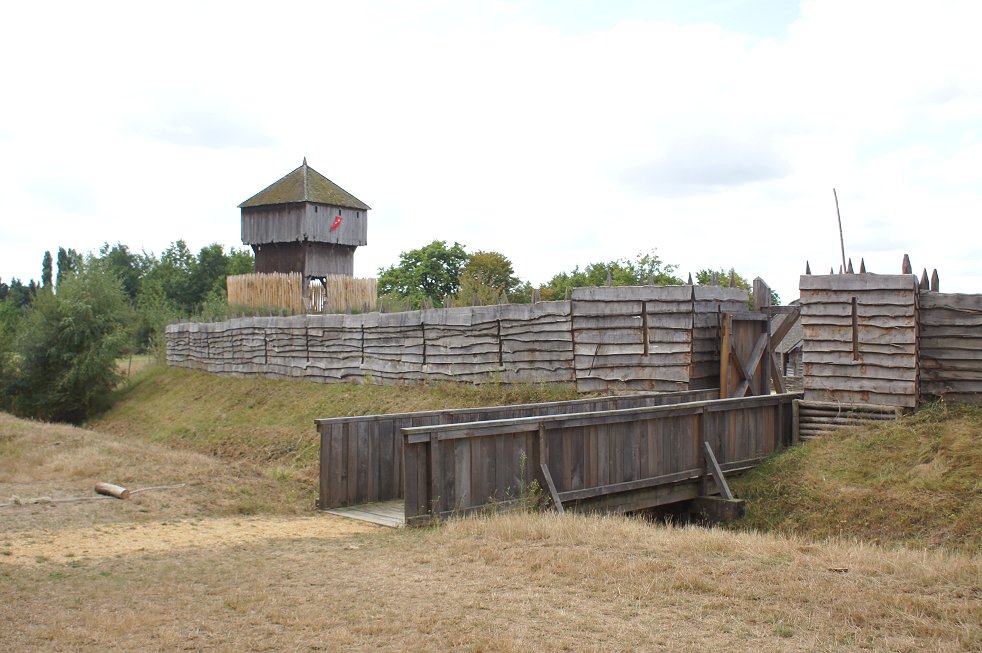
To accommodate tourists, a more elaborate bridge has been built over
the wet ditch. In the background can be seen the keep, or dungeon.

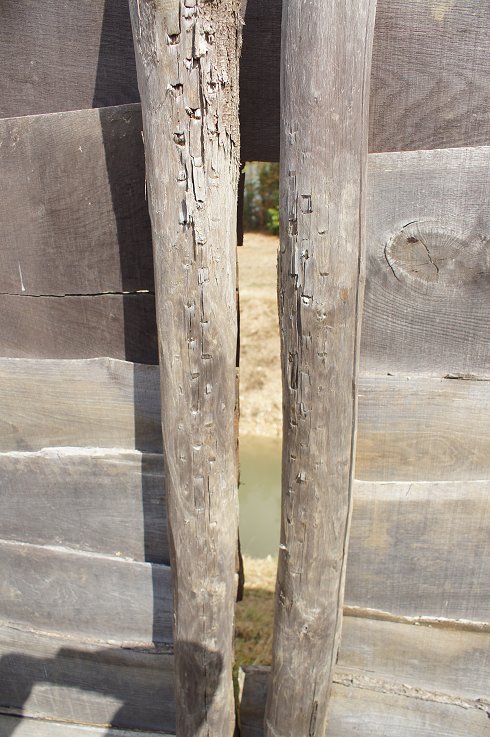
At left is a representation of a crude palisade secured by rope.
At right is its successor, a plank wall secured by nails.
Long arrow slits allowed for a maximum possible range of fire. The
walls of later stone castles grew much higher than these walls in response to taller siege machines.

The castle includes a garden enclosed by wooden fencing reinforced
by vegetation. This garden is actually a copy of a monastery
garden. A garden could be used for vegetables, medicines, and dyes.
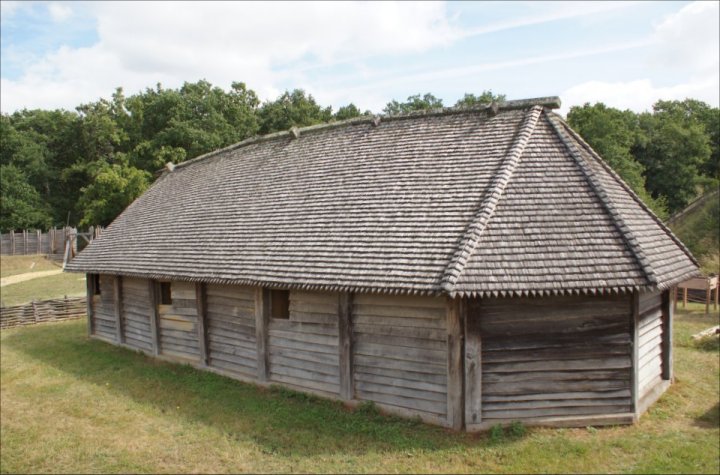
The Duke's House
It was good to be the duke - relatively speaking. Palatial living did
not yet exist, but the duke lived much better than the common man. The duke
administered justice locally.
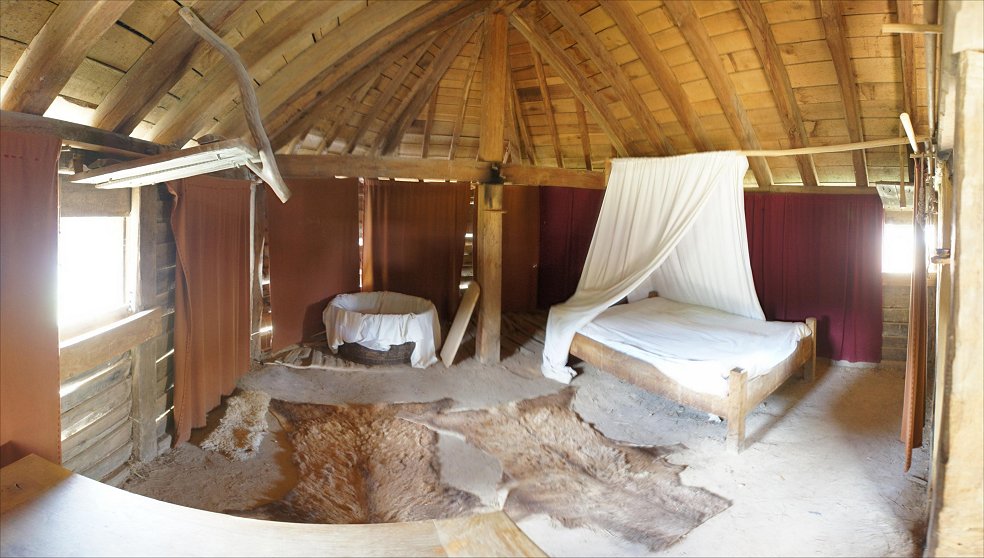
Perks of being an aristocrat included a bed and windows. The floor is still dirt - but covered by animal skins.

Fireplaces didn't exist yet, but smoke was given a crude exit.
Food could be cooked among the embers of a fire. How about that fancy
cookware?
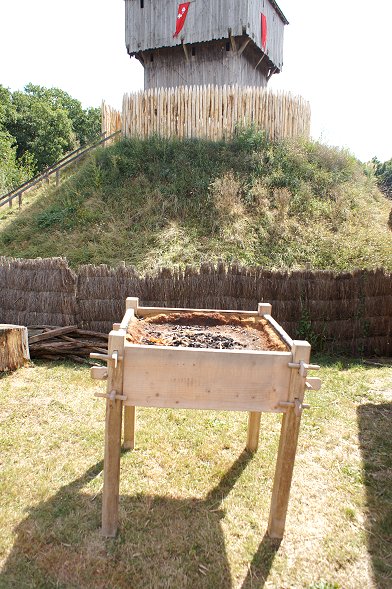
Soldiers on campaign would bring a portable version of the same cooking system. It can be easily disassembled and
reassembled.
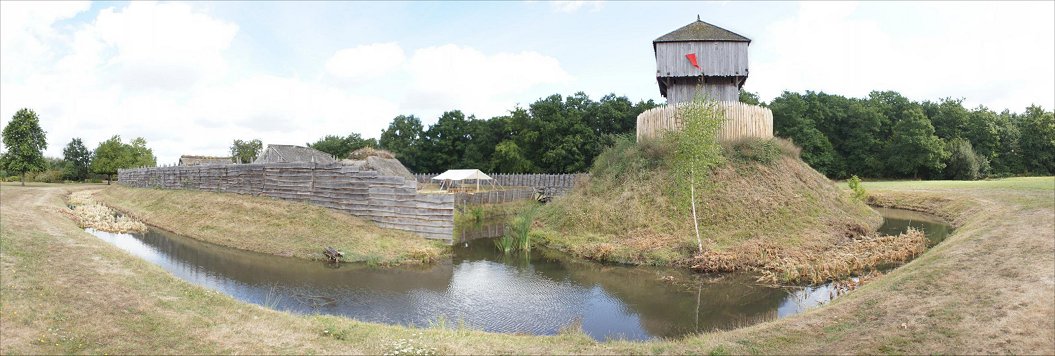
The keep, the strongest part of the castle and the final defense of the
castle, rests upon a mound of earth, or motte, to give it height over
the rest of the castle, which it dominates. It is also protected
by its own wet ditch.
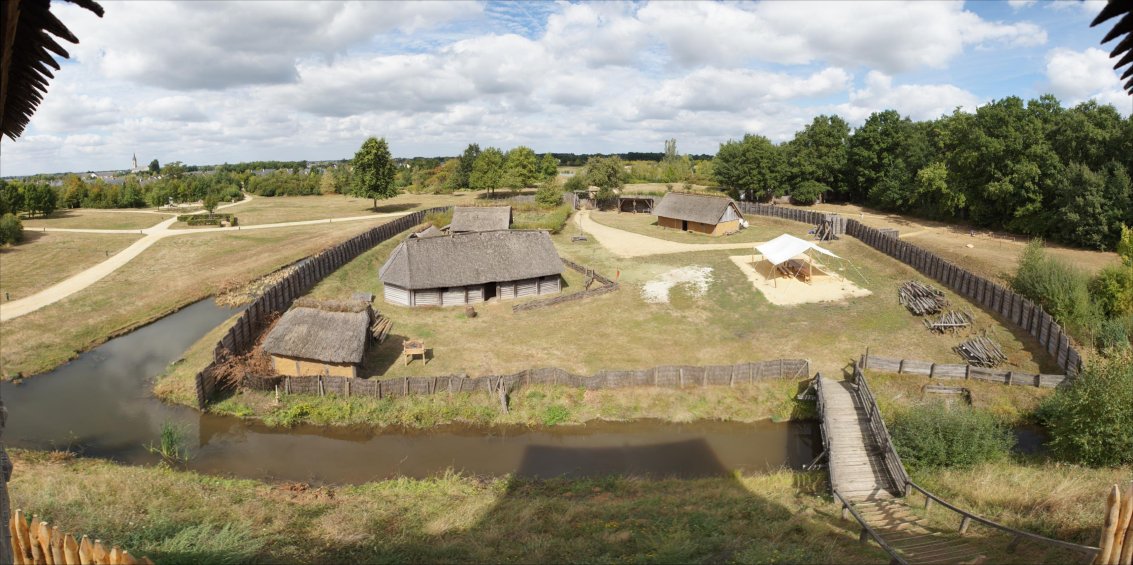
Historically, justice had been administered from high ground, so
perhaps not coincidentally the keep, the duke's strongest defensive area, clearly dominates the rest of the
castle, called the bailey. The duke's house and his other
buildings are clearly visible, but there would also have been many
other structures within the castle to accommodate
the 100 people who lived here, but these buildings have not been reconstructed. Just to the right of the bridge
and across the moat from the motte is a boat landing. The real castle that the resonstruction is based on had river
access.
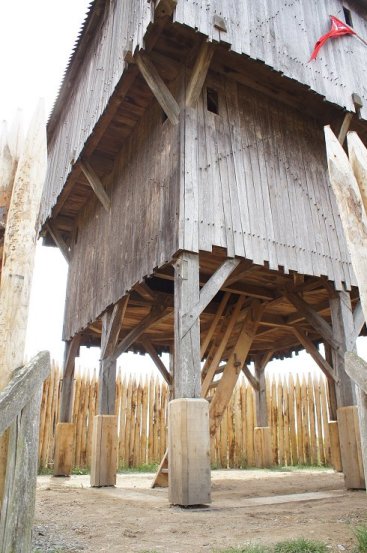
Built behind a palisade, the keep was elevated and built to allow items
to be dropped on attackers. The modern stair access
is luxurious and non-historical. A crude ladder would have extended
down next to one of the walls.
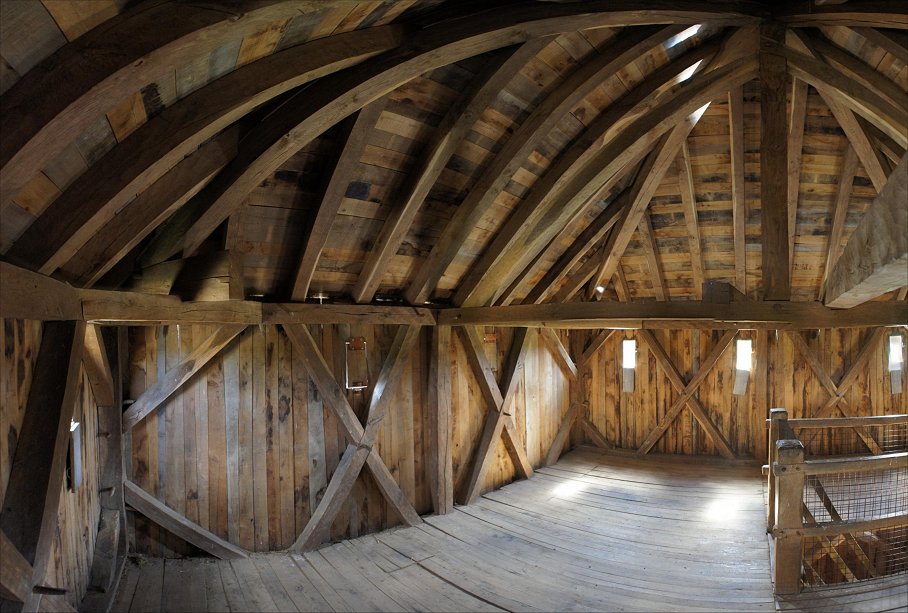
The inside of the keep differs from its historical counterpart in that
access is now via stairs rather than a ladder, as was historical, and firing slits extended
much closer to the floor to allow a maximim field of fire.

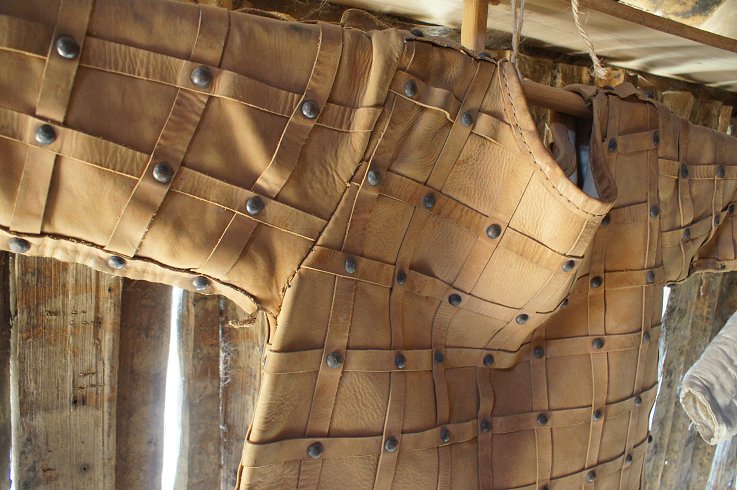
In the popular mind, the Middle Ages were a time of plate armor, but in
reality plate armor was common only in the late, or High, Middle Ages.
Through much of the era, chain mail and leather was the armor of
choice. As times changed and technology developed, plate armor
replaced chain mail and stone replaced
wood. Many motte and bailey castles were rebuilt in stone, but
this was usually done over the course of many years, typically starting
with the keep. Warwick Castle in England is an excellent example of a modernised motte and bailey castle.














